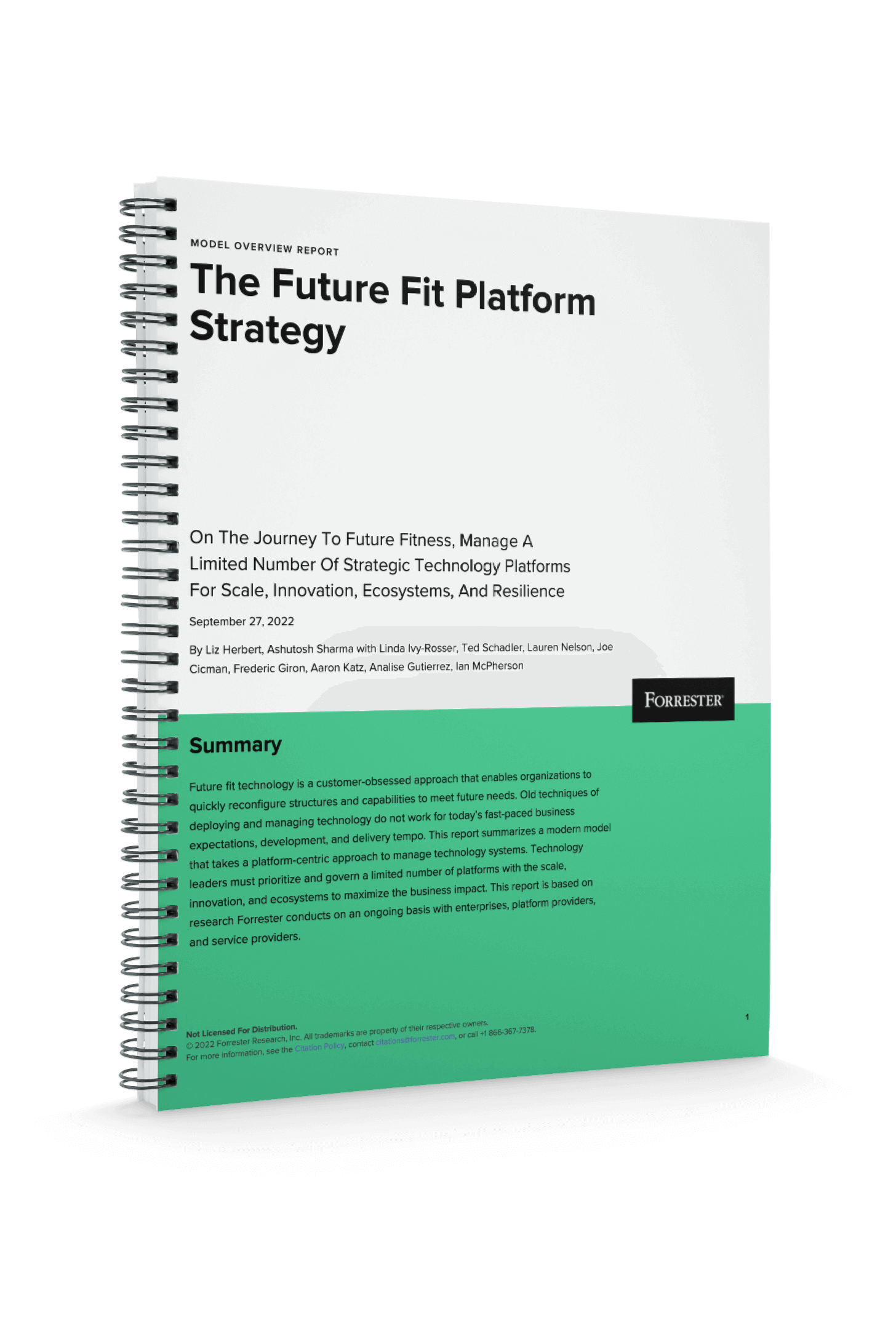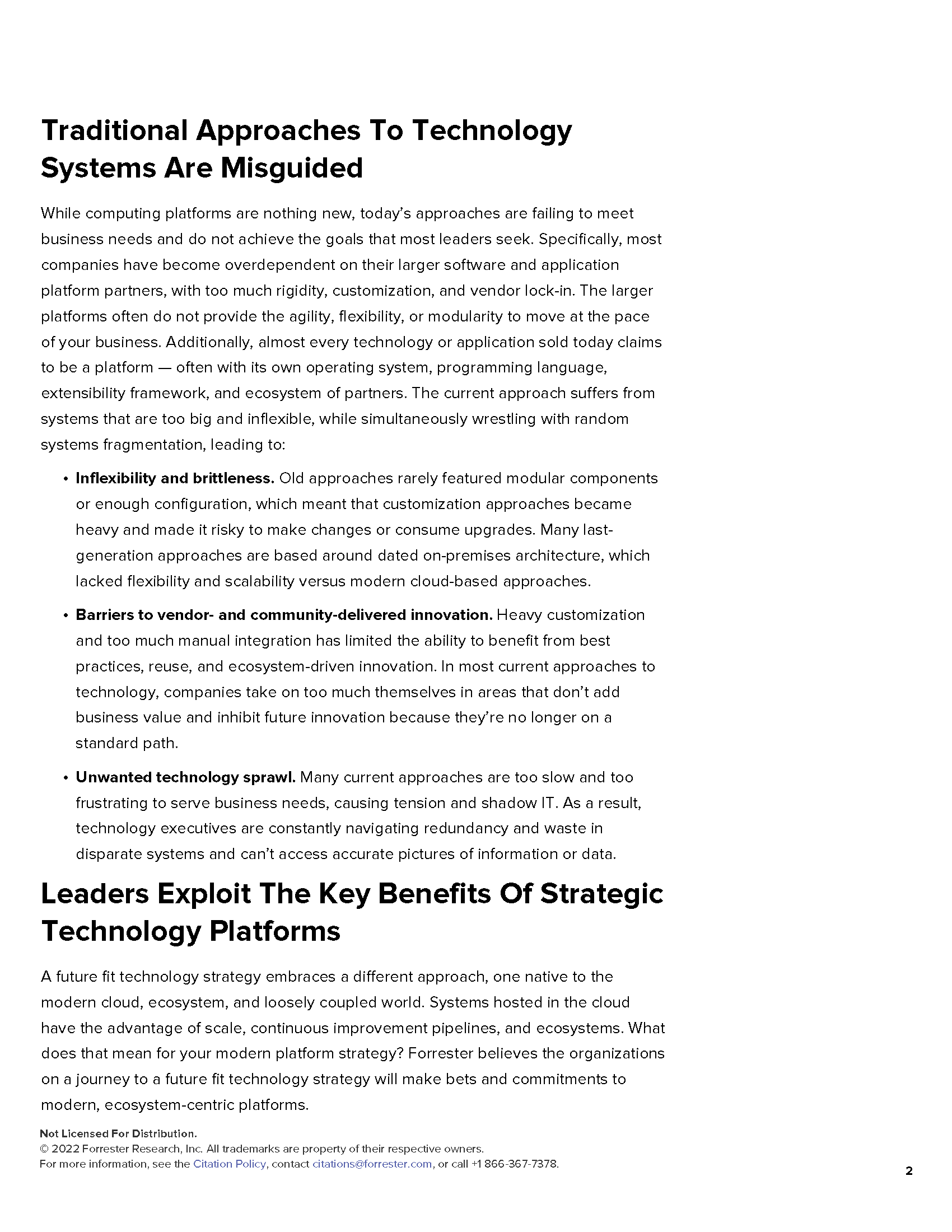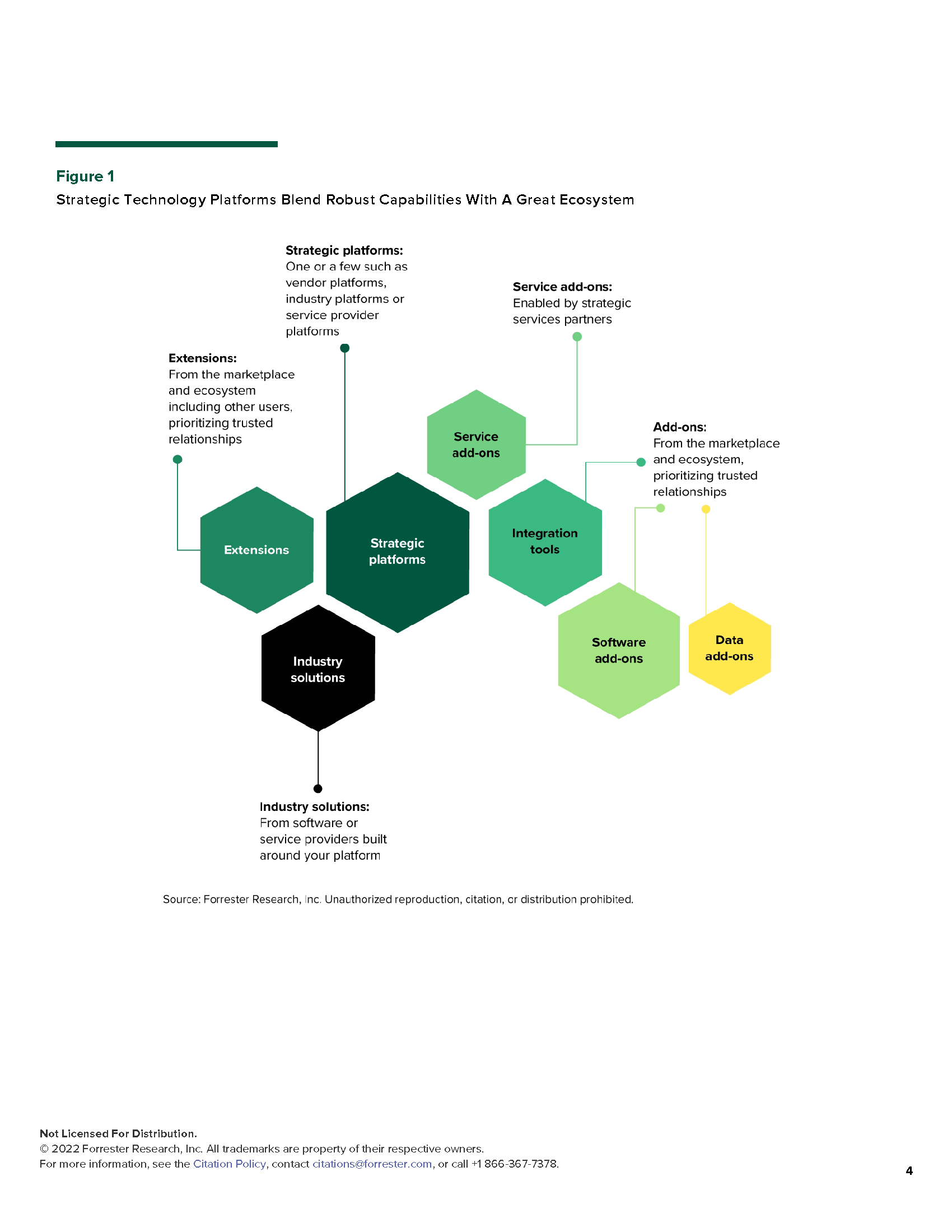.png?cdnVersion=2445)
FORRESTER REPORT
Why traditional approaches to technology are slowing you down
Executive summary
The market is shifting faster than ever. Leaders are facing an increased pace of business, greater expectations, and constant volatility. To keep up, technology leaders must rethink how they deploy and manage technology across their organizations. Many traditional approaches - especially those that rely heavily on larger software vendors with too much rigidity, complexity, and vendor lock-in - are too slow and inhibit the business from meeting its goals.
There’s a better way. Forrester, which conducts ongoing research on the subject, has seen the benefits of leaders committing to a limited number of modern platforms with scale, modularity, and robust ecosystems.
This report offers a more efficient and effective approach to adopting technology, giving leaders insight into the types of platforms to consider and a framework to evaluate them.
Key takeaways
Learn why traditional approaches to technology hinder business impact
Discover the key benefits of adopting strategic technology platforms
Understand what to look for when choosing a strategic platform
Learn how to build a strong platform strategy for better outcomes
PDF content preview
Traditional Approaches To Technology Systems Are Misguided
While computing platforms are nothing new, today’s approaches are failing to meet business needs and do not achieve the goals that most leaders seek. Specifically, most companies have become overdependent on their larger software and application platform partners, with too much rigidity, customization, and vendor lock-in. The larger platforms often do not provide the agility, flexibility, or modularity to move at the pace of your business. Additionally, almost every technology or application sold today claims to be a platform — often with its own operating system, programming language, extensibility framework, and ecosystem of partners. The current approach suffers from systems that are too big and inflexible, while simultaneously wrestling with random systems fragmentation, leading to:
- Inflexibility and brittleness. Old approaches rarely featured modular components or enough configuration, which meant that customization approaches became heavy and made it risky to make changes or consume upgrades. Many last- generation approaches are based around dated on-premises architecture, which lacked flexibility and scalability versus modern cloud-based approaches.
- Barriers to vendor- and community-delivered innovation. Heavy customization and too much manual integration has limited the ability to benefit from best practices, reuse, and ecosystem-driven innovation. In most current approaches to technology, companies take on too much themselves in areas that don’t add business value and inhibit future innovation because they’re no longer on a standard path.
- Unwanted technology sprawl. Many current approaches are too slow and too frustrating to serve business needs, causing tension and shadow IT. As a result, technology executives are constantly navigating redundancy and waste in disparate systems and can’t access accurate pictures of information or data.
PDF preview


Access the complete report
Adopt modern technology platforms